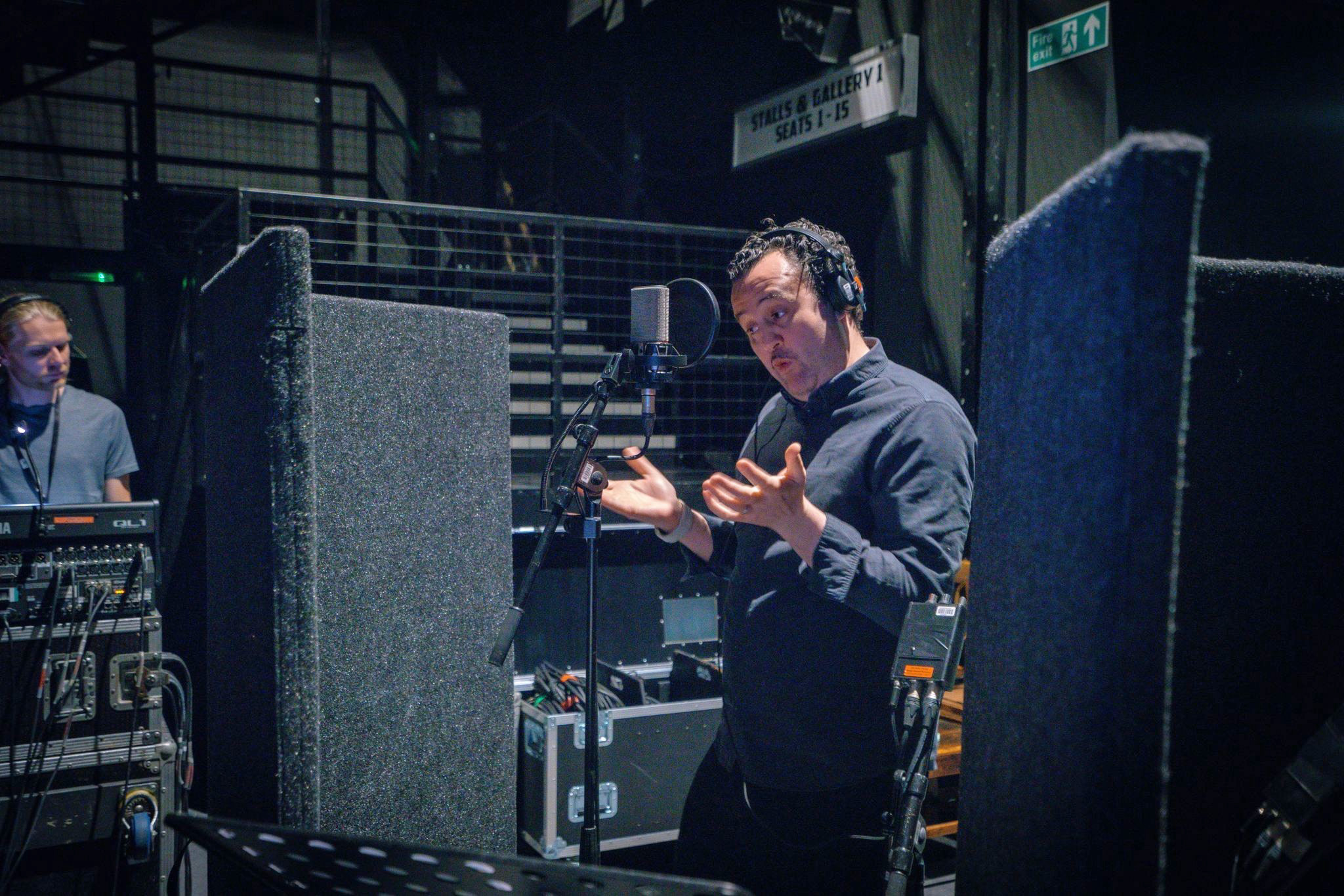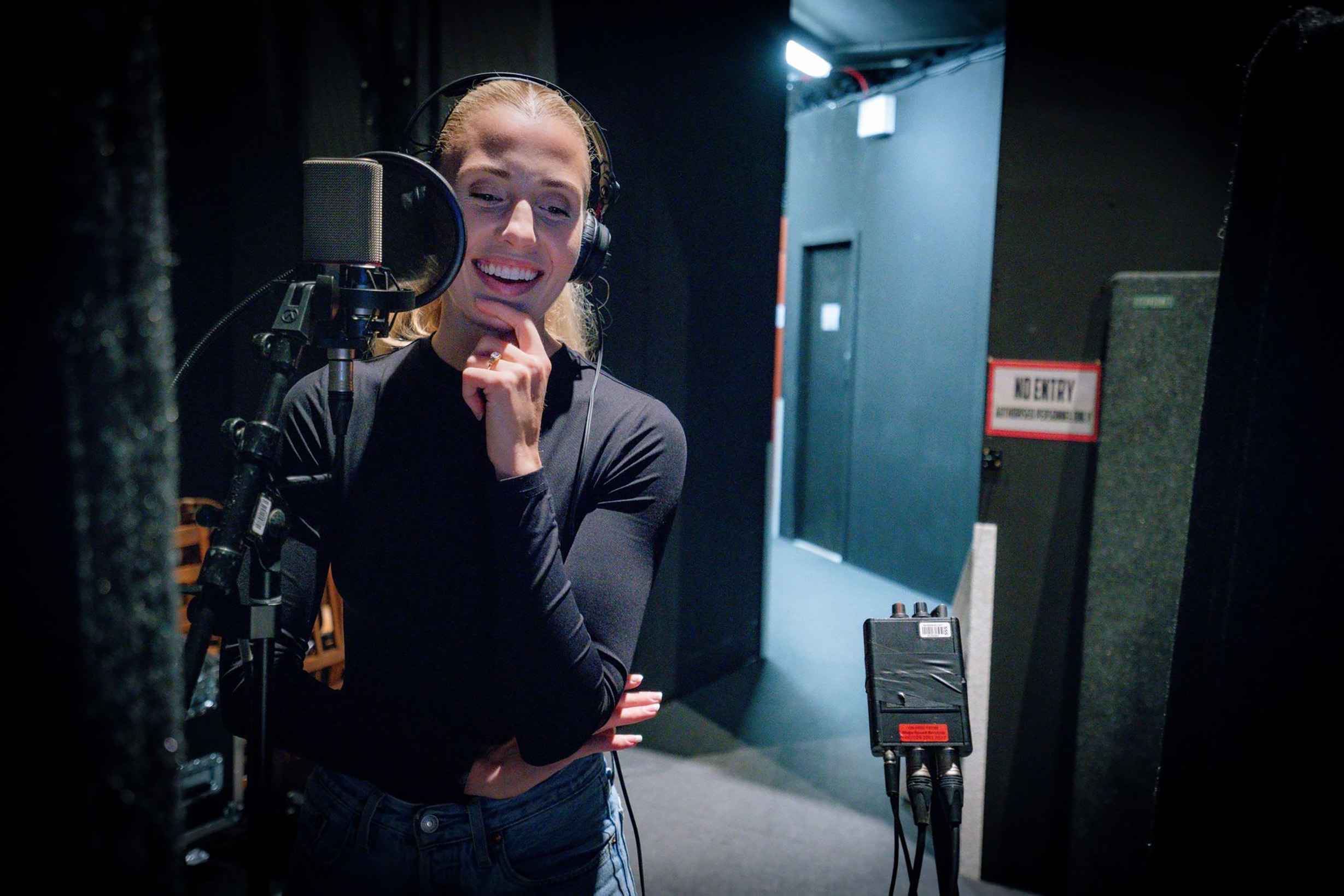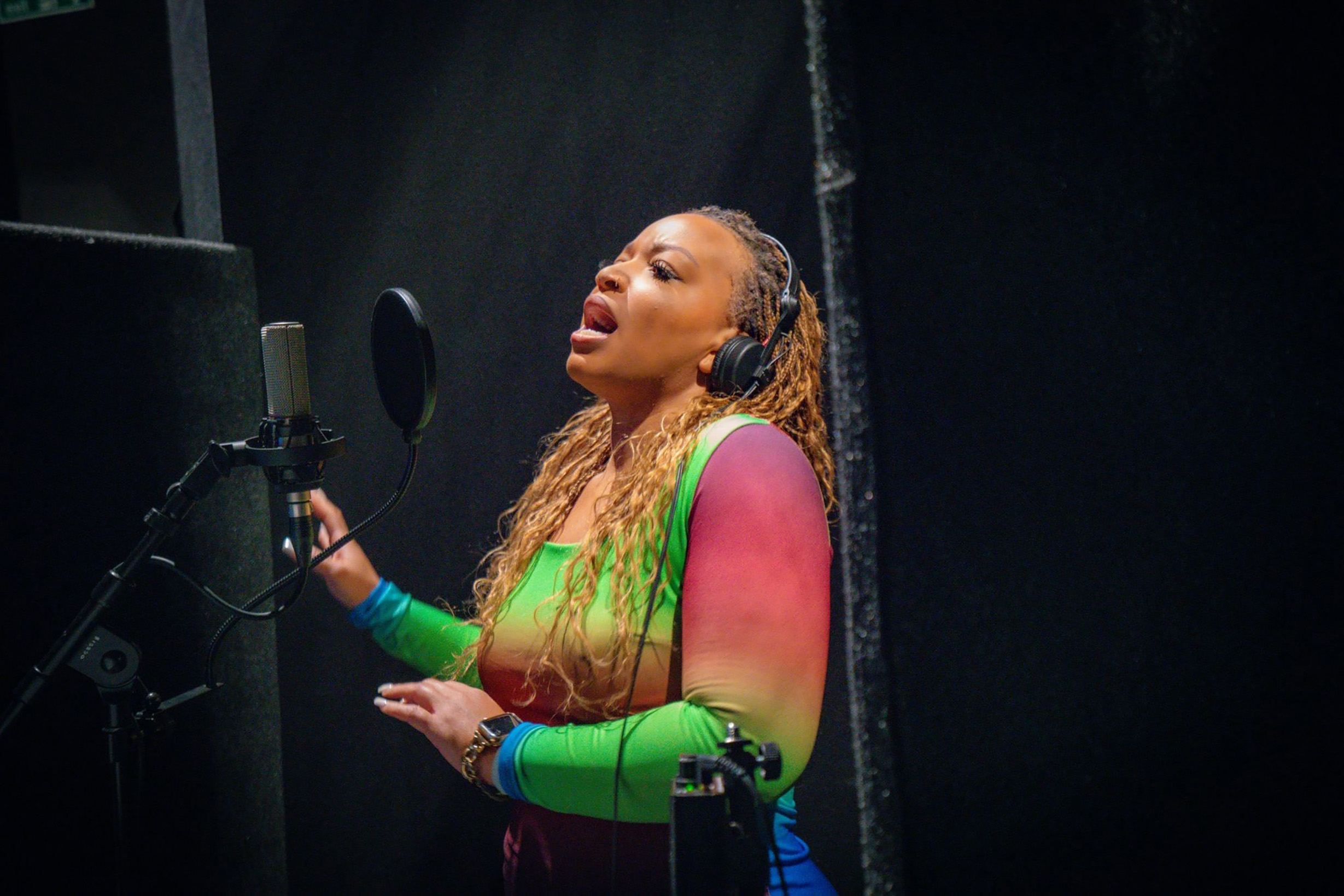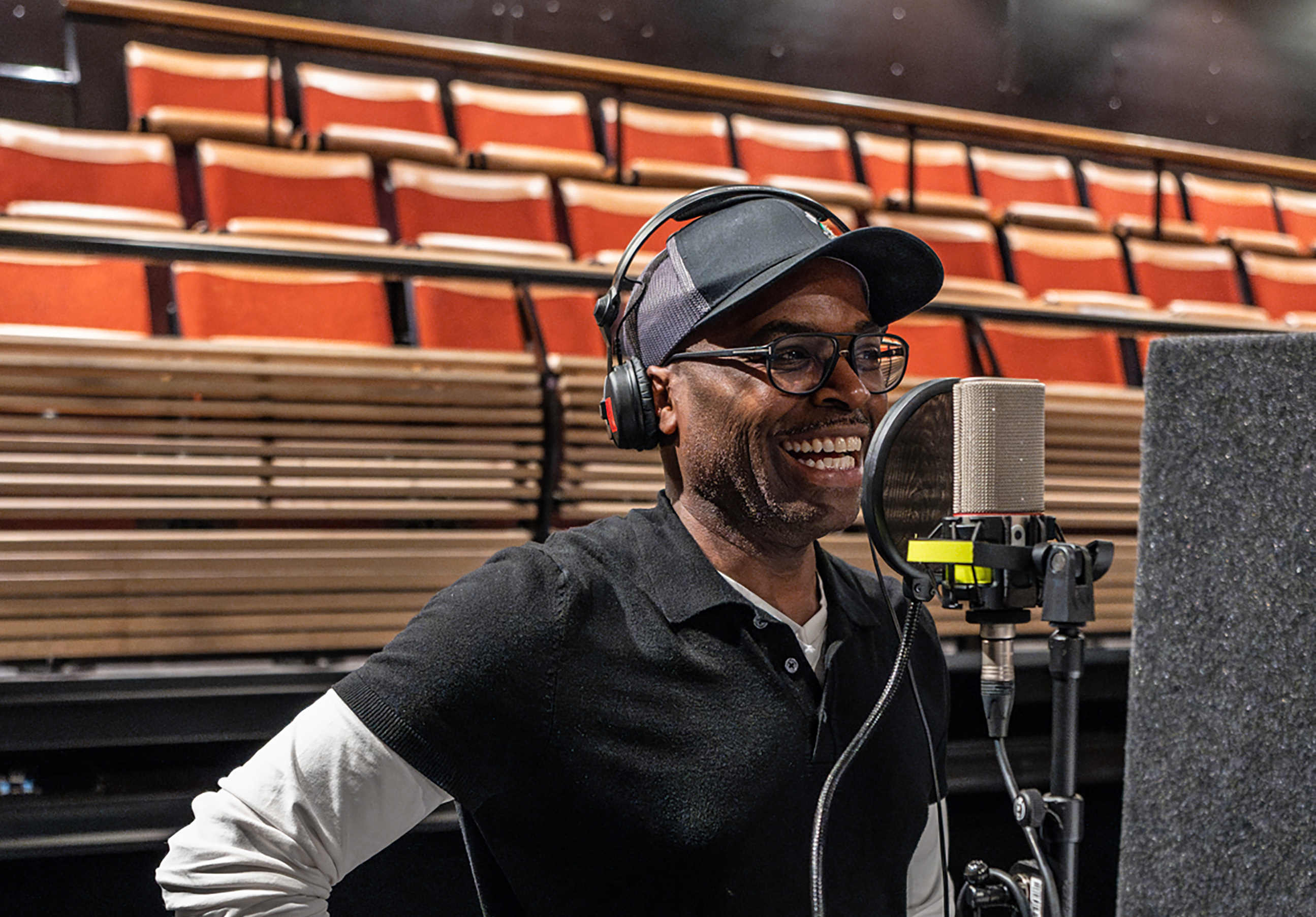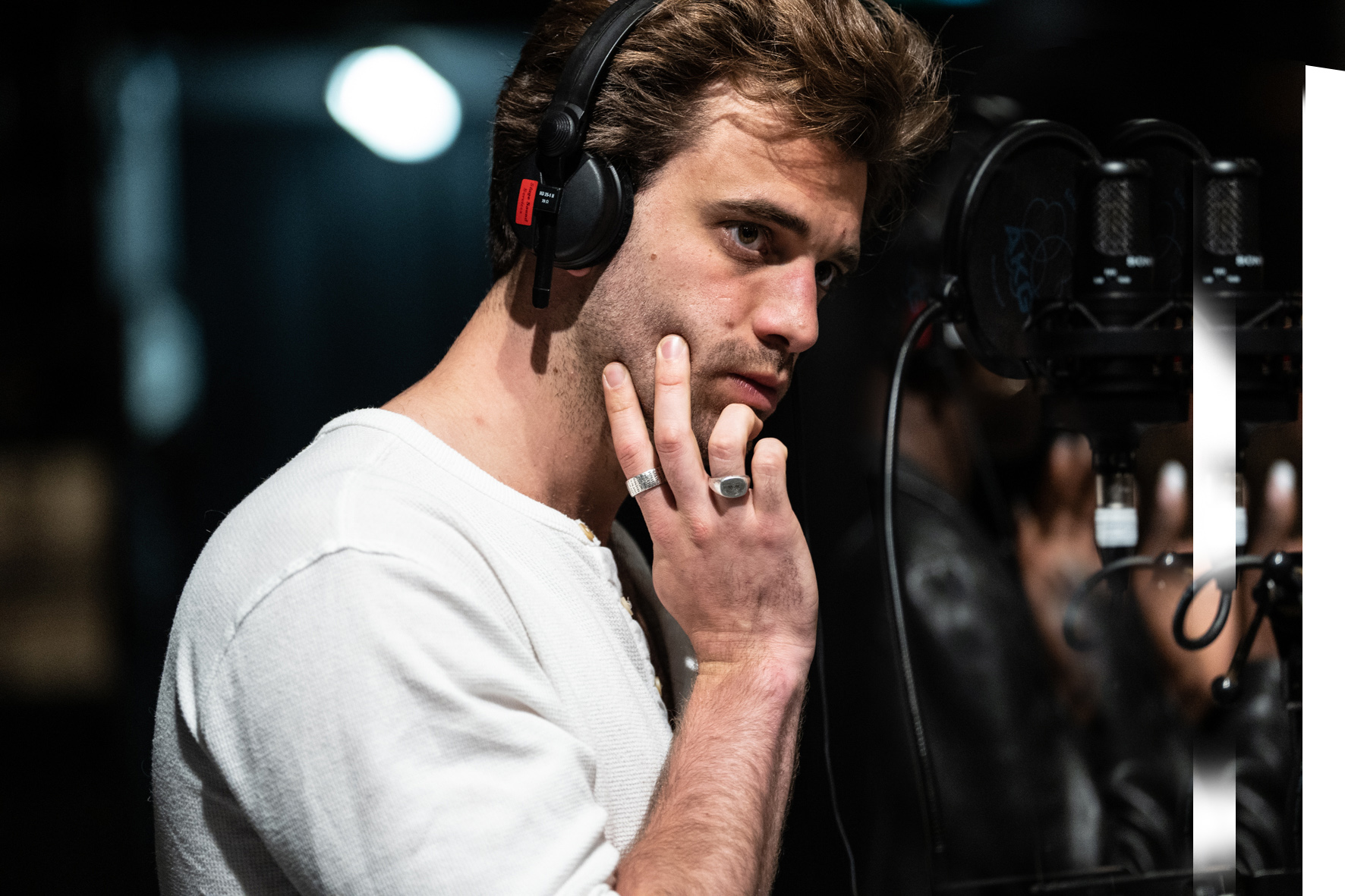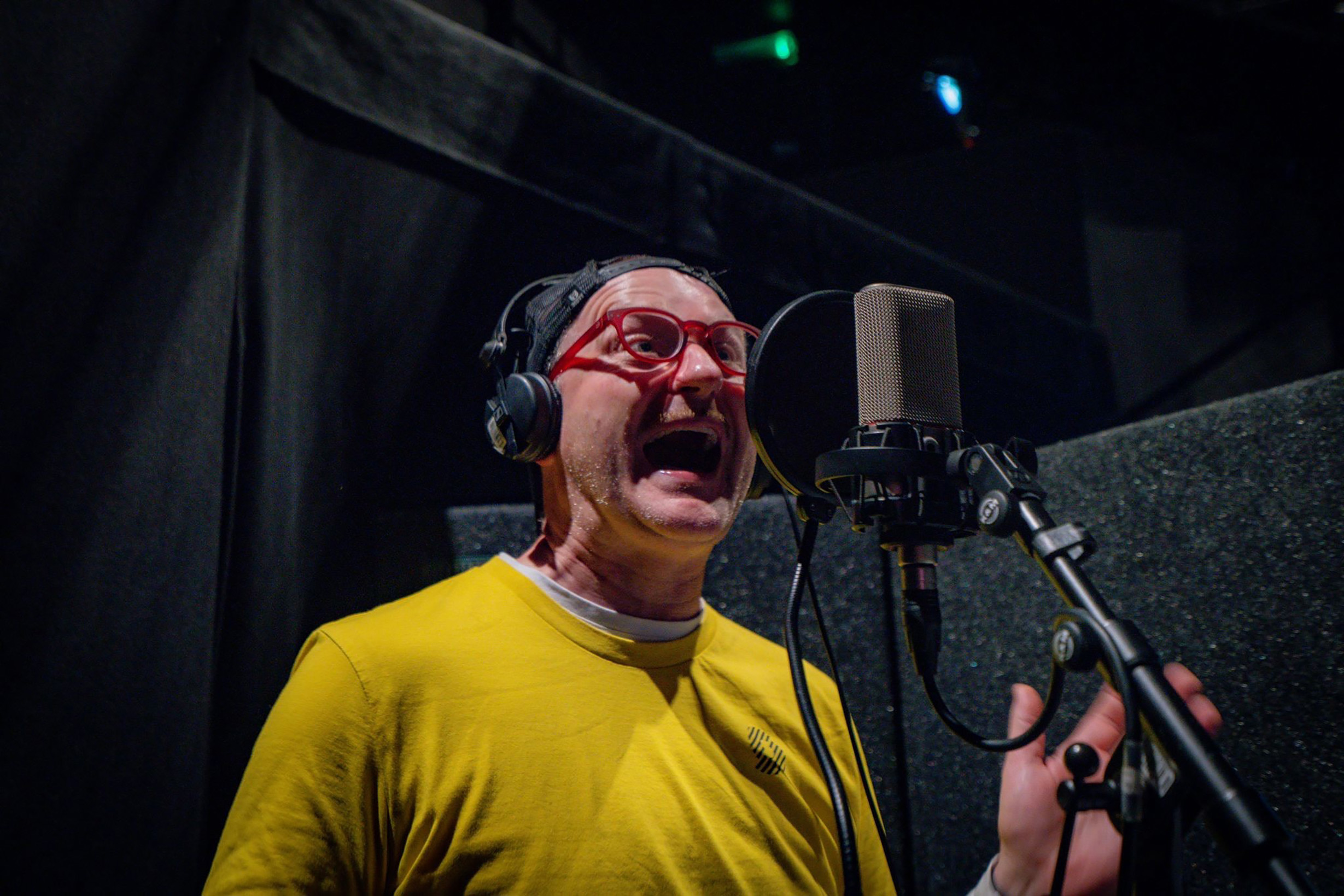Recording 'Guys and Dolls'
Edward Seckerson
Tuesday, August 13, 2024
Recording can be a precise, painstaking process and, as Edward Seckerson discovers at a temporarily refashioned Bridge Theatre, laying down the London cast album of Guys & Dolls is no exception
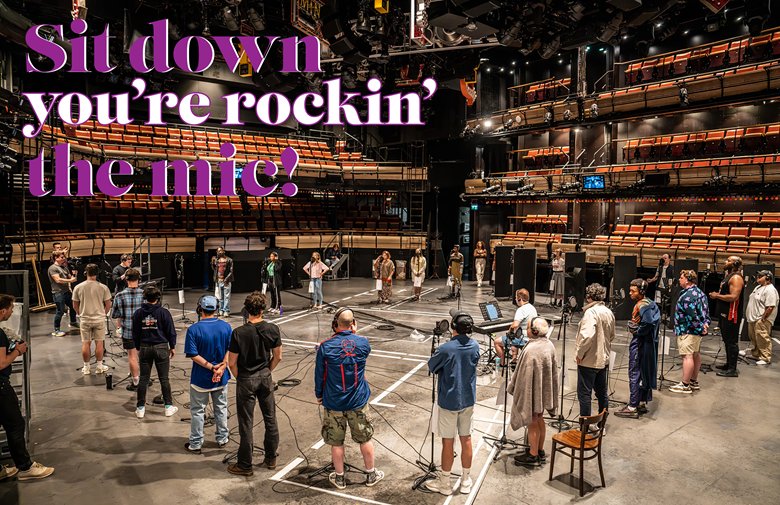
Minutes after arriving at the Bridge Theatre where the cast album for the venue’s smash hit Guys & Dolls is currently being laid down, I run into the director of the show, Nicholas Hytner, and put to him the question everybody has been asking: will the album include Marisha Wallace’s disco dance-off rendition of ‘Luck Be a Lady’? Please tell me it will?
It will. Phew. Hytner and president of Broadway Records Van Dean confirm this at the start of the day’s session and Hytner recalls that, having proposed the idea for this ‘extra immersive’ finish to the show, Wallace was so up for it that the audio was in the can quicker than you could say ‘Adelaide’.
It is strange, though, to arrive at an empty Bridge Theatre and walk into an arena now devoid of promenading punters being ushered through the action beneath a blaze of garish neon signs. It’s spooky in the semi-darkness. The principals laying down tracks are hidden away in booths, but the band are in situ on their elevated station – not so much a pit as a perch – and musical supervisor/arranger Tom Brady is poised to do another take of the Act One duet between Sky and Sarah, ‘I’ll Know’. Recording can be a functional and unglamorous business, and I now retire to the subterranean control room where the usual banks of computer monitors and video feeds offer no suggestion as to where we are. It could be anywhere.
Daniel Mays, Marisha Wallace and Celinde Schoenmaker setting down their tracks (images credit: Karl Westworth)
Founded in 2012, Broadway Records is one of a plethora of small independent labels now specialising in London and Broadway cast albums. They gave us the Broadway cast album of Matilda and have recently added London’s Bonnie & Clyde and the newly acclaimed Ride to their roster. The idea to record the Guys & Dolls album in the theatre rather than in the studio was a first for them and, you may ask, with such an immersive production, why they didn’t opt to record it live in performance? Dean cites the physical and extraneous challenges thrown up by a constantly moving cast and audience while acknowledging that there is also something about the space and the atmosphere it engenders that is an integral part of this show. He and producer Michael Moritz felt that they could subliminally tap into that atmosphere through a cast and musicians now fully bedded in for the run. Plus, the recording team have been able to take full advantage of ‘immersive’ surround-sound technology, making this, they believe, the first cast album to be conceived as an immersive recording from the outset.
It’s strange to arrive at an empty Bridge Theatre and walk into an arena now devoid of promenading punters beneath a blaze of garish neon signs
It made sense, too, to wait for the cast to have completely ‘inhabited’ their characters – not just because of the microphone’s scrutiny but because, in true Frank Loesser fashion, what is spoken and what is sung are inseparable and every song is effectively a ‘scene’.
Loesser would famously tell his second wife Jo Sullivan (star of his show The Most Happy Fella) not to do so much ‘singing’. In a number like ‘I’ll Know’, which Andrew Richardson (Sky) and Celinde Schoenmaker (Sarah) are in the throes of recording, the chemistry is wholly dependent on the relationship between speech and song. And to that end, Schoenmaker really makes capital of the shift in colour between her head and chest voice, asserting her passion and authority ‘behind the mask’, so to speak, of her clean-cut Salvation Army image. It’s so exciting when, in full-throttle chest, she delivers the climactic line ‘When my love comes along’.
I take aside the orchestrator/arranger Charlie Rosen, who landed this particular assignment while supervising the Broadway production of Hytner’s National Theatre smash One Man, Two Guvnors, and we muse for a time on how Broadway’s heritage, specifically original scores and band parts, was so unceremoniously discarded once these classic shows closed. Rosen is a big band aficionado and so the colour and cast of the 1920s and ’30s source material is a natural habitat for him. Anyone who’s seen the show will know just how exciting and immediate his arrangements (and the sound design) are. In preparation for the Bridge production, he listened to pretty much every recording of the show from the original 1950 Decca album onwards and marvelled at how its musical ethos was preserved – albeit with a new coat of paint each time.
Guys & Dolls cast members Cedric Neal, Andrew Richardson and Mark Oxtoby record their numbers in special booths set up at London’s Bridge Theatre
Richardson is now flying solo in ‘My Time of Day’ – perhaps the most extraordinarily beautiful and concise number in the show. Actually, it’s not a number – it’s a poem set to one of those unique Loesser melodies, and it’s not the voice but the sleepy alto saxophone that invites us in. Rosen says there are certain givens in arranging this score and the alto sax is one of them. It simply has to be in the line-up: it’s an acoustic ‘must’ – a keyboard ‘imposter’ just won’t do. His band is 14 strong, and although he would dearly have loved a real cello and/or a French horn, he prides himself on having found acoustic, rather than keyboard, solutions to most problems.
The vocal line of ‘My Time of Day’ is unexpected in the best sense – pitching it so it is both accurate and a natural extension of the spoken word is tough. Brady wants Richardson to listen to a play-through without vocal so he can hear what is happening rhythmically and harmonically beneath him. Awareness of how the harmony moves under his vocal line is essential to the pitching of it. The next take really benefits from the exercise plus, heard alone, one becomes super-aware of the impressionistic tone of Rosen’s scoring. The harmony is familiar and yet strangely decadent, offsetting a vocal line which sounds for all the world as though it’s being created spontaneously in the singing of it – a kind of free, in-the-moment improvisation. It’s a characteristic of all Loesser’s melodies and Rosen knows just how to mirror that ad libitum feeling in the band.
At this point, Brady asks the solo fiddle player if she thinks it might be sweeter con sordino (muted) – and indeed it is. But more importantly, he has asked the opinion of the player. ‘It’s important you like it,’ he says, as if to point out how vital it is for sound to relate to phrasing and characterisation. The player concurs that it adds to the ‘dreamy’ quality she is seeking, and that’s another tiny detail fixed.
The idea to record the Guys & Dolls album in the theatre rather than in the studio was a first for Broadway Records
Detail is the name of the game when it comes to setting down a cast album, because it’s the little things that make each reincarnation of these classic shows unique. As a piece of Musical Theatre, Guys & Dolls is on everybody’s shortlist of favourite shows, not least because the brilliance of the book (chock-full of great one-liners) and the joyous spontaneity of the score are in complete accord. That’s rare. It’s also a show on which performers can really leave their mark – which means that everyone exiting the Bridge Theatre, having had the best of times (whether or not they participated in the Marisha Wallace-voiced techno dance-off ), will want to relive that experience. And now they can. Guys & Dolls on Broadway Records is out in September, and will be reviewed in the next issue.


For tickets to the Bridge Theatre’s production, which has been extended until 4 January 2025, visit bridgetheatre.co.uk
